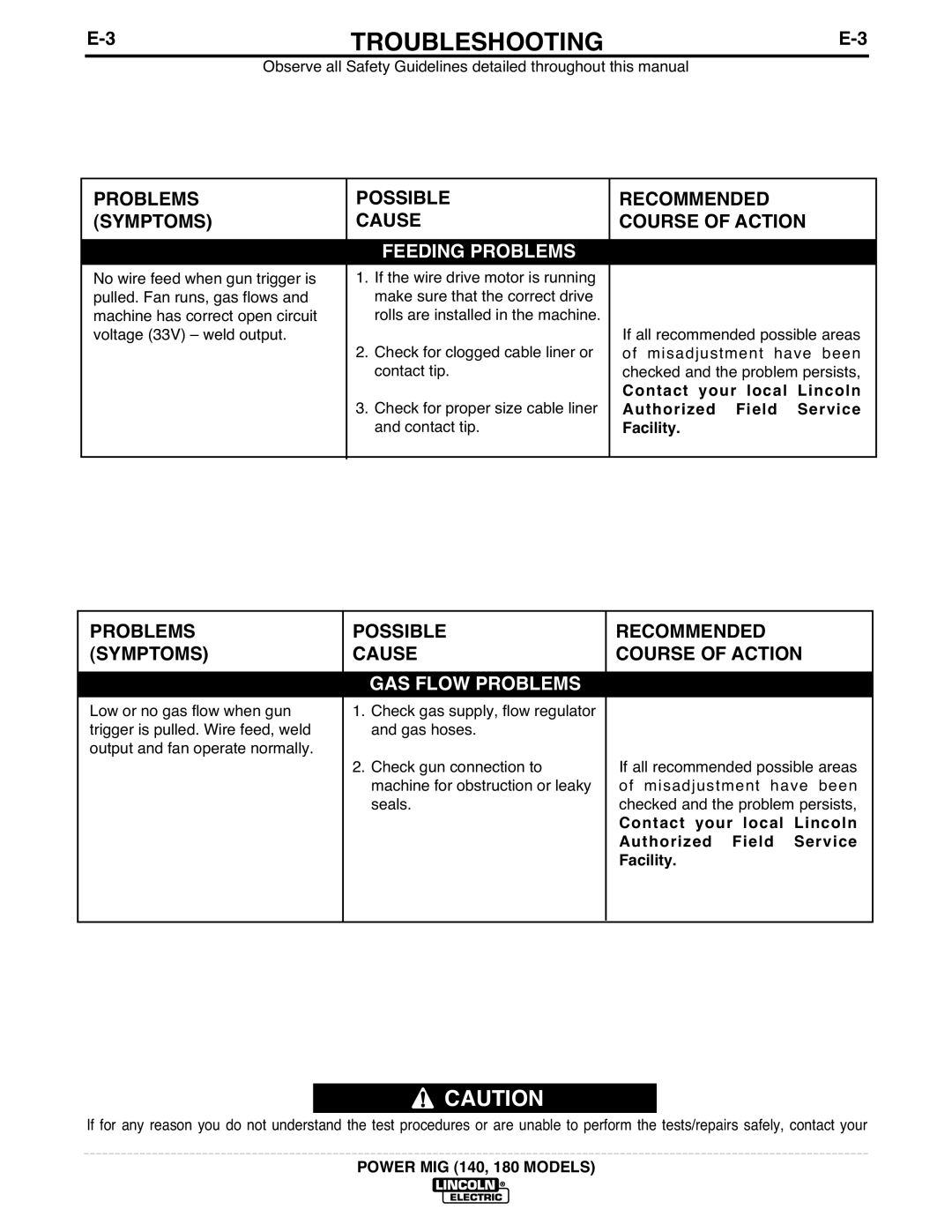180, 140 specifications
Lincoln Electric is a well-known name in the welding industry, and the Lincoln Electric 140 and 180 models continue to set the standard for reliable, user-friendly welding equipment. These machines are popular among hobbyists, DIY enthusiasts, and professionals alike due to their performance, portability, and innovative features.The Lincoln Electric 140 offers a compact design tailored for both novice and experienced welders. With a maximum output of 140 amps, this versatile MIG welder can handle a range of projects, including welding mild steel, stainless steel, and aluminum. It operates on 120V standard household current, making it accessible for home use. One of its standout features is its variable voltage control, which allows the user to adjust the output for optimal welding based on the material thickness. Additionally, the machine features a quick-change drive roll system that simplifies the process of switching wire types, ensuring that you can adapt to different materials effortlessly.
Meanwhile, the Lincoln Electric 180 takes things a step further, providing a robust 180-amp output that allows for welding thicker materials. This model operates on 230V, which makes it suitable for heavier-duty applications. The 180 model is equipped with an advanced digital display that provides real-time feedback on voltage and wire speed, aiding welders in achieving precision in their work. Its durable construction ensures reliability, and the built-in thermal overload protection serves as a safeguard against overheating, prolonging the machine's lifespan.
Both models incorporate Lincoln Electric's patented Infinite Voltage and Wire Speed Control, allowing for fine-tuning of settings for a wide variety of welding tasks. They come with a spool gun compatibility feature, expanding their usability for aluminum welding with ease. The ergonomic design and lightweight construction facilitate mobility, making them ideal for both shop and field work.
In summary, the Lincoln Electric 140 and 180 welders offer users the perfect blend of performance and convenience. Their innovative technologies, user-friendly interfaces, and versatile features make them excellent additions to any welding toolkit, catering to various skill levels and project requirements. Whether for occasional home projects or more demanding professional tasks, these welders deliver exceptional quality, efficiency, and reliability that Lincoln Electric is renowned for.

